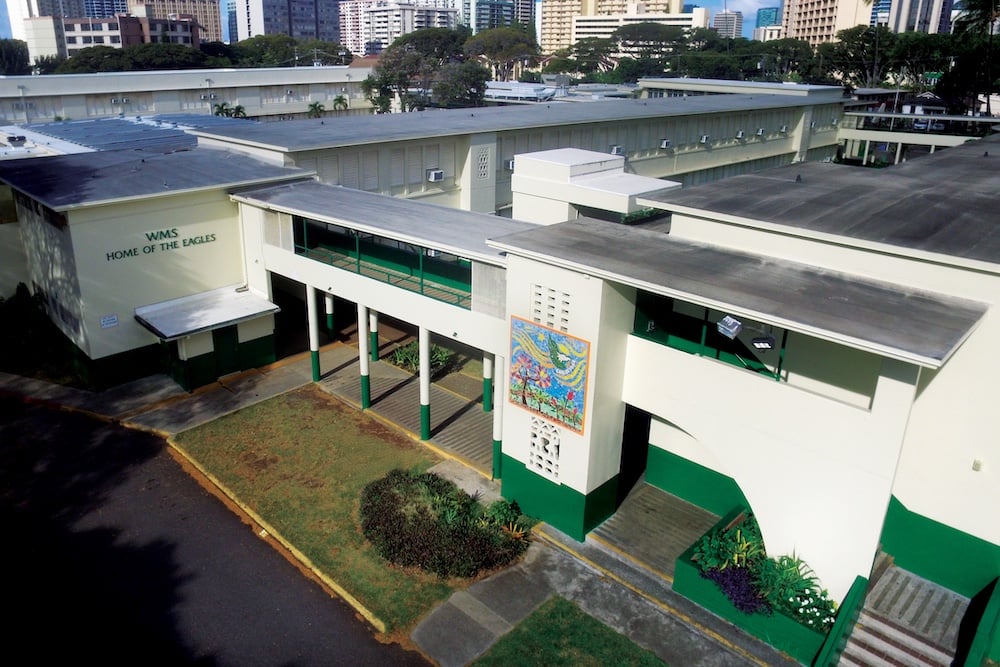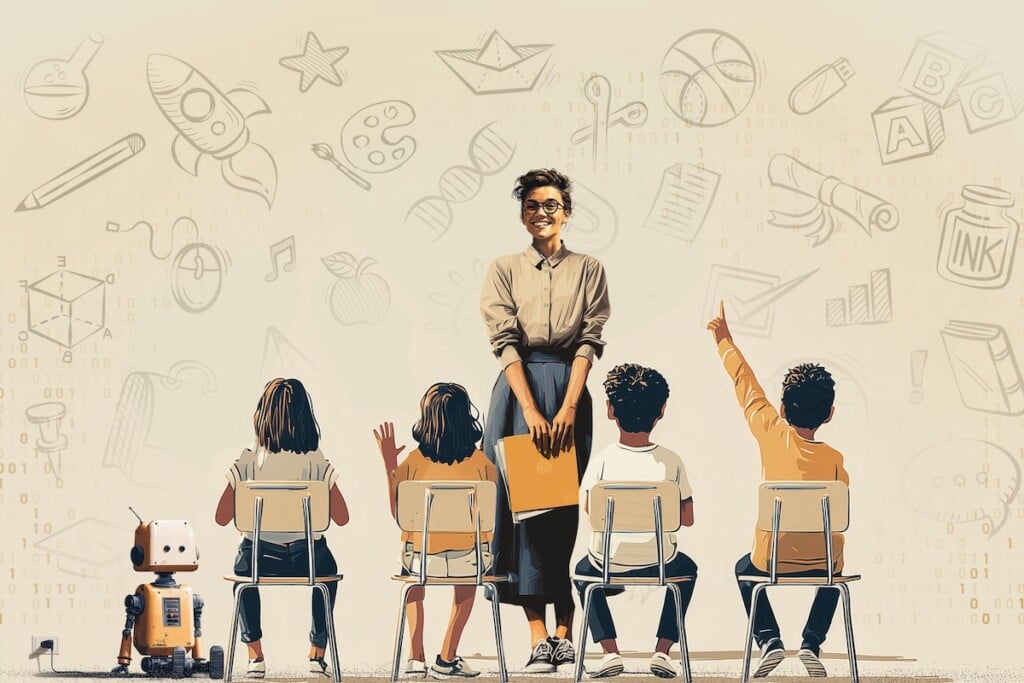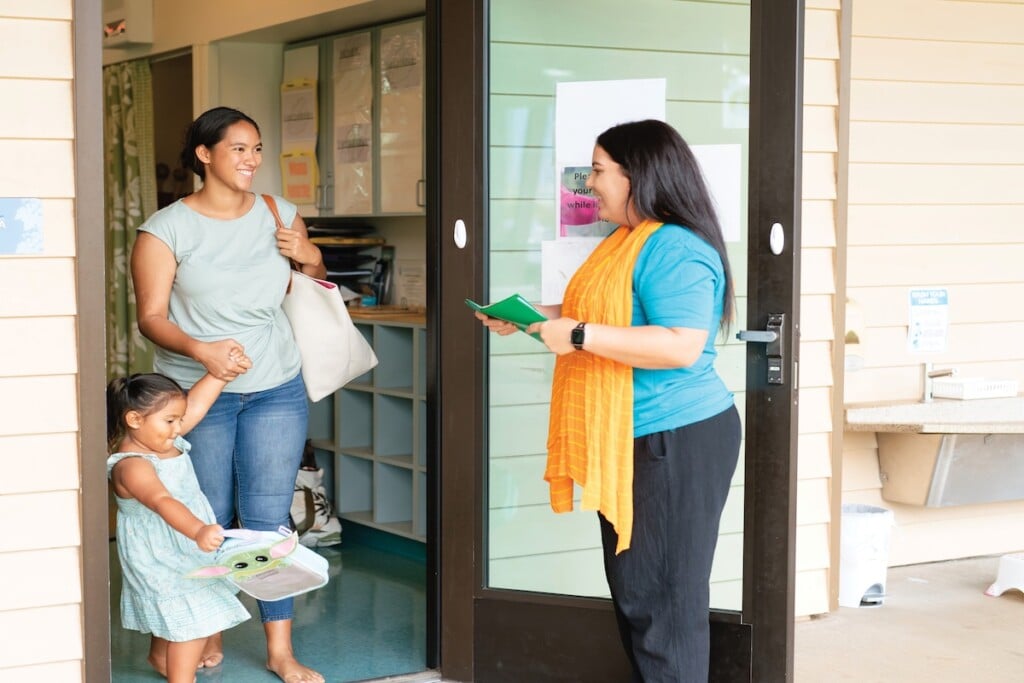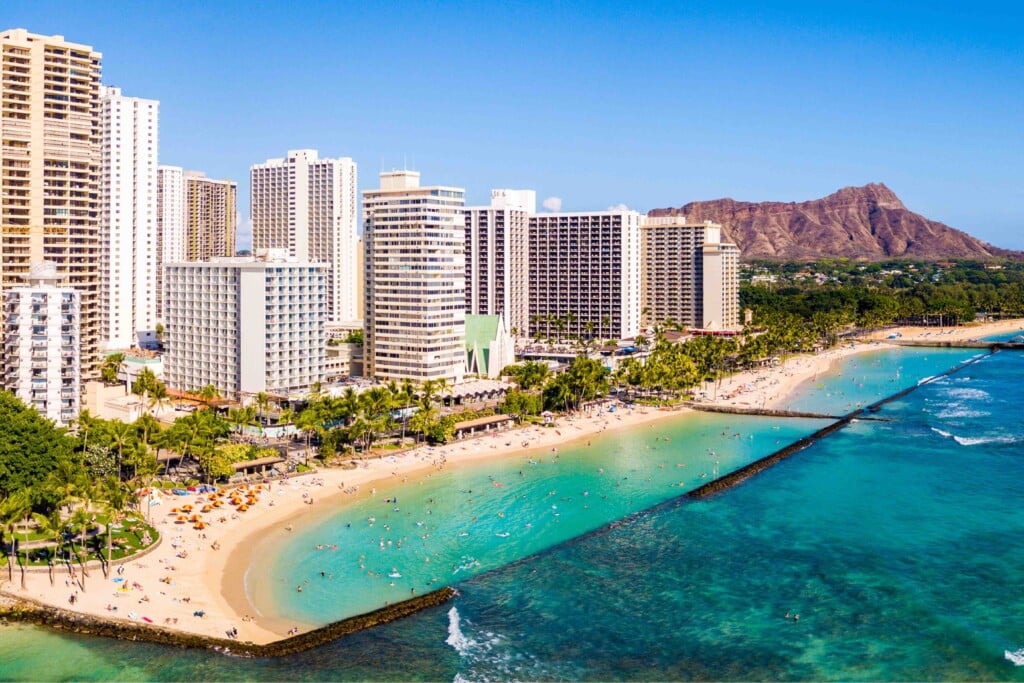Hawai‘i’s Public Schools Are National Leaders in Academic Recovery. Can They Keep Up the Momentum?
Here’s how three Title I schools are making improvements, including expanded assessments, tutoring, and after-school and summer learning.

Five years after COVID sent a paralyzing shock through the nation’s public schools, the impact of lost instructional time can still be felt. In every state, fewer young people are able to read and write with appropriate fluency, or accurately solve math and science problems.
In Hawai‘i, 39% of fourth graders and 33% of eighth graders lack basic skills in reading, while 23% of fourth graders and 42% of eighth graders lack basic skills in math, according to the National Assessment of Educational Progress. Known as the “nation’s report card,” the NAEP test is administered every two years at select schools; it’s considered more rigorous than many similar state tests.
Hawai‘i’s 2024 NAEP results still lag behind those from 2019, when 37% of fourth graders and 32% of eighth graders lacked basic skills in reading, and 22% of fourth graders and 35% of eighth graders lacked basic skills in math.
Chronic absenteeism is a lot higher, at about 25% compared with 14% in 2019; meanwhile, 52% of Hawai‘i high school graduates enrolled in two- or four-year colleges, compared with 55% in 2019. The percentage of Hawai‘i high schoolers who meet college-readiness benchmarks, based on the national ACT test administered to all public school juniors in the state, has slipped over the past five years, according to data supplied by the Hawai‘i Department of Education.
But these statistics don’t paint the full picture. Hawai‘i’s public school system is more agile and ambitious than it used to be. Unlike 20 years ago, when the state’s schools consistently ranked among the worst academic performers in the nation – “a perennial bottom-dweller,” as Terrence George, the outgoing president and CEO of the Harold K.L. Castle Foundation, puts it – students now score in the middle of the pack nationally, and sometimes better than that.
“There’s no question in my mind that the Department of Education, with all its continued faults as a huge, old, bureaucratic institution, has made some serious progress,” says George, whose foundation spearheads and funds many educational initiatives. “And it represents the focused work that our teachers and administrators have done to keep their eye on what matters most.”
Since the schools reopened in-person instruction in fall 2021, more and better data have driven many of the improvements. Heidi Armstrong, the DOE’s deputy superintendent of academics, says schools are now assessing students three times a year, using the results to target tutoring and intervention efforts, and offering extensive summer learning programs at 222 of the state’s 296 public schools.
Those efforts are paying off. In February, an analysis of NAEP results delivered welcome news: Fourth and eighth graders in Hawai‘i ranked second in the U.S. in reading recovery between 2019 and 2024, and fourth in math recovery.
Overall, Hawai‘i fourth and eighth grade students performed about 13% of a grade level lower than in 2019 – still considerably better than the national average of nearly half a grade level lower. The analysis was conducted by the Education Recovery Scorecard, a collaboration between researchers at the Center for Education Policy Research at Harvard University and Stanford University’s Educational Opportunity Project.
While Hawai‘i students are recovering from the academic slide more quickly than those in nearly all other states, the ongoing learning lag isn’t entirely unexpected, given the enormous decline in reading and math skills after schools were shuttered. When looking at the worst examples of continued learning loss – a full year in some struggling U.S. districts that didn’t offer extra teaching time – the Education Recovery Scorecard describes the daunting challenge of bouncing back in its 2025 report, Pivoting from Pandemic Recovery to Long-Term Reform:
“In order to make up for a full grade equivalent loss within two years would have required students to learn 150% of what they would typically learn per year – for two years in a row. Without lengthening the school year, dramatically increasing summer learning or providing full-year tutoring to more than a minimal share of students, it was close to impossible for districts to recover from a full grade equivalent loss in achievement over two years. Were teachers simply expected to speak more quickly?”
Hawai‘i’s recovery is the result of many of those exact efforts, aided by the infusion of more than $600 million in federal pandemic-era funds to help schools recover. The final round of pandemic funding was obligated in September 2024.
“The department set out a combination of foundational strategies that we really believed would move the needle in helping us make up that learning loss and then, long term, allow us to progress,” says Armstrong.
“I think that all our systems of support – the universal screening, hearing the students, providing interventions when deficits are recognized – were all crucial to the growth we’ve seen and will be continually important as we move forward, always striving to increase our proficiency.”
“All means all”
Kids growing up in low-income households are more likely to have poor grades and test scores than affluent kids, and less likely to finish high school or attend college. The link is strong and well-documented.
Hawai‘i’s school system is filled with these struggling children and families, as the challenges of managing the basics of life – stable housing, a working car, enough food and clothing for the kids – are as hard as ever. Aloha United Way’s most recent ALICE Report found 41% of local residents barely scrape by or are in deep poverty.
In the 2024-2025 school year, 196 regular public schools and public charter schools – or 66% of all schools – were designated as Title I, which means a disproportionate number of students come from low-income families that qualify for free or reduced-price lunches.
Nearly 11% of the state Department of Education’s $2.18 billion annual budget in 2024-2025 comes from federal funding, much of it specifically targeted for Title I schools and special education. Schools have historically relied on the federal money to hire people to help in the classroom and fund professional development, new technology and academic programs – all of which have helped Hawai‘i students bounce back academically.
In March, massive layoffs were underway at the U.S. Department of Education and the department itself was targeted for closure by the Trump administration. Responsibility for distributing Title I and special-education funding was expected to move to another, unnamed agency. The Hawai‘i attorney general joined 20 others across the nation to try to block the department’s dismantling.
Meanwhile, the National Center for Education Statistics, which administers the NAEP test for the Education Department, had been gutted to a tiny handful of employees, making future testing unlikely.
Amid the chaos, teachers and administrators in Hawai‘i that I spoke with said they were very worried about funding delays and cuts. But they were also determined to continue helping students to progress and maintain the momentum they’ve achieved so far.
“My whole theory is ‘all means all,’” says Jhameel Duarte, the principal at Kīpapa Elementary, which dedicates a half-hour block each day to grouping the entire student body by the extra assistance they need, whether it’s with reading comprehension or phonemic awareness. She expects such strategies will continue, no matter what happens.
“Some of our kids need acceleration and so they get that, but there are a lot of kids who still need support. What we’re trying to do is make sure that we’re closing our gaps,” Duarte says.
Here’s how Kīpapa Elementary and two other Title I schools are making strides for all their students.
Case 1: How data helps a small Mililani school make big gains
Kīpapa Elementary is a well-kept school in the suburb of Mililani. It’s also the area’s only Title I school, with about 50% of its 485 K-5 students qualifying for free or reduced-price lunches, according to fall 2024 data from the Hawai‘i DOE’s Child Nutrition Programs.
The school was founded in 1932 – before the area was known as Mililani – for the children of farmworkers in nearby plantation fields. Today, Kīpapa Elementary is hemmed in by houses, condos and apartments, and a public housing complex across the street.
Duarte is the school’s dynamic new principal, having arrived in June 2023 as one of dozens of new principals who stepped up during a wave of pandemic retirements. She says the school was performing below students’ capabilities at the time.
Her 20-year career as a teacher and administrator at Title I schools across O‘ahu – at Pālolo Elementary, William P. Jarrett Middle, Wahaiwā Middle, Waialua High and Intermediate, and ‘Aiea High – had turned her into a forceful proponent of student data, both collecting it and using it. Without data to pinpoint those who need extra help, and data to make sure they’re improving, a person’s life can derail, she says.
“I’ve had kids in ninth grade not being able to read, and what happens? They stop attending school, which is very difficult to watch. I’ve seen kids not graduate, and that’s heartbreaking,” Duarte says. As an educator and school leader, “I can do something to make sure they’re not falling through the cracks.”
Charts and graphs line the walls of her office and a staff-only room where grade-level teachers and academic coaches meet every two weeks to talk about assessments, instruction and curriculum. They’re supported by extra classroom tutors, hired with Title I funding, who help run small-group sessions in core reading skills.
The charts and graphs clearly show how every grade level, classroom and student performs in core subjects, both now and in the past. “The first level is just understanding what your data is saying and where your kids have been,” Duarte says.
One chart tracks scores from the state’s annual Smarter Balanced Assessment and links the information to specific teachers and academic priority areas. Others show results from the triannual “universal screeners” that gauge proficiency in real time. More fine-tuned assessments pinpoint what a student needs help with, such as sounding out words.
An interactive chart assigns every student with a red, yellow or green card to show if they’re struggling, in the middle or solidly meeting targets. After new assessments, a student’s card is placed in the low, middle or high section, which quickly shows who is making big improvements, and who is slipping and may need counseling or other interventions.
As a leadership aid, a circular graphic outside Duarte’s office matches photos of teachers and staff to their personality traits. Duarte says it’s a quick reminder that she may need to modify her “dominance/action” style to better connect with the “steadiness/reflective” types. Another data point that she’s especially proud of is parent attendance at school events, at 100%.
After a single year of this intensive, data-driven approach, Kīpapa Elementary’s proficiency scores jumped dramatically on the 2023-2024 state achievement tests:
• 66% of students were proficient in English language arts, up 13% from the prior year
• 67% were proficient in math, up 20%
• 63% were proficient in science, up 17%
Duarte says she was shocked to see last year’s “phenomenal scores,” but cautions that 2024-2025 scores will probably be lower as “it’s a different set of kids and a different set of dynamics,” with “more accentuated behaviors” on display this year.
And she recognizes that the stress of so much testing can be hard on students, who sometimes express their frustrations on the Panorama student survey – another regular test that gauges social-emotional health.
While testing is necessary, she says, it isn’t the main objective. “It’s really about the individualized needs of kids, making sure that each kid is closing the gap, each kid is being successful, each kid is being celebrated for their growth.”

Tutor Lori Gibson with students Mina Lakjohn and Moroni John, who received $100 gift cards from the Rotary Club for being top attendees of the Ocean View afterschool tutoring program in the Ka‘u district of Hawai‘i Island. Graduation rates for the Marshallese students attending tutoring rose from 0% to 100% in a single year.
Case 2: Helping Marshallese students in Ka‘ū advance and graduate
Ka‘u High & Pahala Elementary School, on the southeast side of Hawai‘i Island, enrolls about 500 students in grades K-12. It’s a particularly high-needs school, where nearly 98% of students qualify for free or reduced-price lunches. Surrounded by agricultural land, the school serves rural communities stretching across 922 square miles of the vast Ka‘ū district, from Pāhala to Nā‘ālehu-Wai‘ōhinu to Ocean View.
Many of the Ocean View students, or their parents, are originally from Enewetak Atoll in the Marshall Islands, says ‘Āina Akamu, the complex academic officer. About 37% of the Marshallese students fall below the poverty line, which in Hawai‘i is currently $36,980 for a family of four; they make up about one-fifth of the school’s student population, he says.
Some of the students live in rudimentary houses perched on the lower slopes of Mauna Loa, 5,000 feet above sea level and often miles from the school’s bus stop. A few have a two-hour walk from the upper sections of the Ocean View grid to the morning bus, says Akamu.
The students face a daily odyssey, descending the mountain on foot on cold, dark winter mornings, dressed in shorts and Crocs, and dodging menacing dogs and vehicles careening down the roads, he says. Once they make it to the bus stop, it’s a 26-mile ride to school.
When they get there, they confront language barriers and cultural differences. Most struggle to keep up with the lessons, or don’t show up at all. Only 16% of the Marshallese students regularly attend school, says Akamu. Until last year, none had made it to high school graduation.
Since returning in the 2021-2022 school year, Ka‘u High & Pahala Elementary School has run after-school tutoring and summer-enrichment and credit-recovery programs. Last year, when federal pandemic money ran out for summer school, the state made a $20 million allocation across the public school system to keep the summer-learning programs intact; funding for summer 2025 was still uncertain in early April.
But those efforts weren’t reaching the Marshallese students. “We take a holistic approach and ask, what do kids need?” says Akamu. “It’s not sitting in front of a computer and doing packets of math. You can’t just tutor after school – you need people who will champion something bigger.”
The school stepped up with additional assistance. It partnered with St. Jude’s Episcopal Church in Ocean View, near the town’s main artery, Hawai‘i Belt Road, to host the students four afternoons a week during the school year and five days a week in the summer.
When the school bell rings in the afternoon, a special tutoring coordinator drives the Ocean View kids in a bus to the church, where she makes them snacks and meals. About 80% to 90% of the Marshallese students attend tutoring, says Akamu.
For academic help, they use a new online option, Tutor.com, for live guidance from qualified tutors, rather than the more common format of prerecorded lessons or AI chatbots. The online service is free and open to all Hawai‘i public school students.
When the after-school session is over, the coordinator drives the students from the church to their homes, scattered across the vast neighborhoods of Ocean View.
Back on campus, a new coordinator for the Marshallese community is helping to build relationships with the families, and the school distributes free boxes of food from the nonprofit Food Basket, hosts Marshallese-focused events, and aids students’ morning treks with supplies such as rain jackets, reflective backpacks, sturdy shoes and flashlights.
The special tutoring program has delivered strong results, based on ambitious but realistic goals. “Our success metric is the percentage of kids who move on to the next grade level or graduate on time,” Akamu says. Last year, 88% of kids in tutoring moved up, and all the seniors graduated on time.
Case 3: After-school options for the “dangerous hours” of middle school
Principal Michael Harano is an old hand at managing the awkward, vulnerable and – aside from the toddler years – “most volatile time in a child’s life,” which are the sixth, seventh and eighth grades, he says.
For more than two decades, he’s led Washington Middle School, located in the densely populated neighborhood of McCully in urban Honolulu. It’s the “most ethnically diverse middle school in Hawai‘i,” he says, and includes kids of Japanese, Filipino, Korean, Chinese, Native Hawaiian and Micronesian descent, among others.
Harano’s approach is more relaxed than many administrators. He says he doesn’t fixate on test results but prefers to focus on what’s most important to middle schoolers: keeping them safe, pushing them to do their best, helping them figure out what they like and what they’re good at, and creating a sense of belonging.
Academically, the school falls in the middle range among O‘ahu’s middle schools, with fewer than half of students showing proficiency in core subjects. But its overall growth scores, which measure student progress, put it among the top six middle schools on the island, according to 2023-2024 data from the DOE: 61% growth in English language arts and 66% in math.
Washington students generally have so-so scores in sixth grade. Harano says those scores typically dip in seventh grade and then, as learning accumulates, they pick up in eighth grade. He says that helping students master a handful of core concepts each year – such as slope and y-intercept problems – is key to developing the problem-solving skills they’ll need to take standardized tests. Since schools reopened, he says many of the faculty have bought into this idea.
And his attention to the students’ social and emotional needs has led to rich after-school programming. Unsupervised hours, he says, are “a dangerous time for kids,” when they’re more likely to engage in shoplifting, drinking, drug use and other risky behaviors.
Structured activities are especially important at Title I schools such as Washington, where 68% of students qualify for free and reduced-priced lunches. Most of the students’ parents don’t have the kind of jobs where they can pick up their kids at 2:15 and drive them to dance lessons, Harano says.
So programs are brought to the students. One is the math team, which developed under the guidance of teacher Sun Park and now has 30-plus members who meet every day after school. Once a dark horse on the competition circuit, the team’s top eighth graders now consistently win the state MathCounts contest against heavyweights such as ‘Iolani and Punahou.
“Mr. Park got them to believe that if you work hard, then you can win,” says Harano. “We don’t go into a competition now and concede anything. We believe we’re going to win.”
All students also have access to extracurriculars and homework help from two well-regarded after-school programs, After-School All-Stars Hawaii and the Boys & Girls Club of Hawaii, whose two-story Spalding Clubhouse is located on the campus’s southern perimeter.
School is out, but the learning goes on
After-School All-Stars, a nonprofit supported by grants and philanthropy, runs programming at 13 middle schools on O‘ahu and Hawai‘i Island, including Washington Middle. Students get homework help and tutoring, as well as take part in activities such as drama classes, pickleball, basketball, arts and crafts, cooking classes, leadership opportunities and gaming matches. The program is free for families and runs until 5:30 on school days.
The Boys & Girls Club offers similar options, including sports, activities and homework help, as well as a relaxing space to unwind. “Kids should be who they are, and we allow them to be,” says Danielle Trinidad, the clubhouse director, who jokes with the older kids on our tour of the facility. “Even the troublemakers are just misunderstood,” she says with a laugh.
The center hosts about 150 students a day, from elementary school through high school, and charges a small monthly fee. It offers summer and intersession options, including field trips, and usually runs until 6 p.m.; on Tuesdays and Thursdays, the center stays open until 7 p.m. for high schoolers.
These kinds of all-inclusive programs are rare at middle schools. The state’s A+ after-school program operates in elementary schools, while middle and high schools are largely left to create their own programs.
About 70% of Hawai‘i’s children have both parents or their single parent in the workforce, according to a 2016 report from UH Mānoa’s Center on the Family. That leaves thousands of young people adrift on weekday afternoons, and during the long summer, holiday and mid-semester breaks.
The Hawai‘i Afterschool Alliance, located on the UH Mānoa campus, connects public schools with organizations offering afterschool programming and maintains a database of services. Paula Adams, the nonprofit’s executive director, says she’d love to see structured after-school programs rolled out more widely to the upper grades.
“There’s this assumption that middle school and high school kids can take care of themselves, but we know that these youth need a safe place … where they can be with their friends, finish their homework and have fun,” Adams says.
She’s worried about cuts to federal grants that pay for much of the after-school funding in Hawai‘i’s public schools.
“If that funding doesn’t come, what is going to happen with afterschool programs?” she asks. “It’s something that not only the state should be involved in but also the city and counties because we don’t want thousands of kids alone in the after-school hours.”
While after-school programs at the middle and high school levels are spotty, summer learning is thriving. Before the pandemic, the DOE ran summer school programs on 30 campuses; in 2024, it had programs at 222 sites. The department offered standard credit-recovery classes and accelerated classes, and a wide range of enrichment programs.
Last summer, 27,660 students attended summer school across the Islands, according to state DOE data. About 45% were elementary school students, 22% were middle schoolers and 33% were high schoolers. All programs were free.
Another new learning option is the DOE’s virtual tutoring program, Tutor.com. So far, it’s been used by 4,593 students, for a total of 12,528 sessions with a live tutor, says Teri Ushijima, assistant superintendent for the DOE’s Office of Curriculum and Instructional Design, who oversaw the project’s development and launch.
The service is available 24 hours every day, and includes a writing component that lets students submit their essays for personal feedback. The service also helps students taking accelerated AP classes and preparing for the ACT and SAT college exams.
Linking Education to the Real World
In recent years, a wealth of new programs has been launched to give public school students the kind of real-life, hands-on experiences that make learning relevant in their lives. Career and technical education, ‘āina-based education and early-college programs can be found in schools across the state.
One of the newest initiatives is “work-based learning,” which relies on outside “intermediaries” who bring together companies and schools for career fairs, classroom talks, apprenticeships and internships.
The Hawaii Workforce Pipeline is one such intermediary. Founded in 2020 by Rachael Aquino and Jennifer Sagon-Taeza, the nonprofit now works with 83 public schools across Honolulu and the Windward side, from Waimānalo to Sunset Beach.
A cohort of students at Farrington High School, for example, is working in paid apprenticeships at the Blood Bank of Hawaii to become certified phlebotomists. When they finish, they can jump into jobs immediately or use the training as a launching pad into different health care roles, says Aquino.
In another example, Hawaii Workforce Pipeline has paved the way for Windward students to train to become registered behavioral technicians, now in short supply. Students work in special-education classrooms, and their online coursework and licensing exams are paid for by the nonprofit.
Before starting the organization, Aquino was the senior program manager for the COPE Health Scholars Program at Adventist Health Castle. The internship attracted “these amazing private school students who were going to be successful without my help,” she says. But the public school students, she says, needed a head start.
“If you don’t start soon with career awareness, then when opportunities are happening later in high school and college, our public school students aren’t ready,” says Aquino. “They don’t always have the same resources, or examples in their families of doctors, nurses and engineers.”
Sagon-Taeza, a curriculum specialist, says education in Hawai‘i, perhaps counterintuitively, may have benefited from the pandemic, which spurred educators to be “a bit more creative” and innovative with their programs and policies.
Will Progress Continue?
In 2002, the Bush administration rolled out a controversial law called No Child Left Behind. It mandated high-stakes testing of all students and administered penalties for schools whose students failed to show adequate yearly progress.
George, the Castle Foundation’s outgoing leader, says that despite being widely vilified, the law put Hawai‘i on the “path of actually caring about data on student achievement and being able to disaggregate the data based on socioeconomic status and ethnicity.”
Eventually, Hawai‘i schools became adept at gathering and analyzing data that “we created for ourselves, not for Washington, D.C.,” he says. Individual schools now have their own specialists and teams that sift through the data and use it to improve students’ learning.
Another major trigger that influenced public education, says George, was the Obama-era Race to the Top of 2009, a $4.35 billion U.S. Department of Education competitive grant that required states to adopt higher standards to qualify for funding awards. Hawai‘i’s Smarter Balanced system is a product of that.
“Before, we had hundreds, if not thousands, of standards that teachers were trying to comply with,” says George. “Now it’s down to a smaller number that are more aligned with not just rote academic regurgitation of knowledge, but actually demonstrate the ability to find different ways of solving a problem, to analyze a passage, to state an opinion and back it up with evidence.”
Armstrong, from the state Department of Education, says Hawai‘i elected to use the Smarter Balanced Assessment to align its content with national standards and to be able to compare proficiency results with other states.
“Our standards are very robust,” she says, “specifically in our math and our English, social studies and science. Our CTE (career and technical education) standards are matched to industry expectations because we know that the purpose of K-12 schooling is to allow students to leave with the knowledge, skills and dispositions to be successful.”
When she was a teacher, the state DOE’s Ushijima says each classroom and school “did a lot of individualized things.” But for the past two decades, “we’ve moved toward data-driven decision-making, looking at student work collaboratively, and we have a vetted, quality curriculum so everyone’s going in the same direction.”
The pandemic brought a potentially insurmountable amount of learning loss among students. Yet many educators say it also brought opportunities for reinvention and a renewed focus on getting Hawai‘i’s kids up to speed in reading, math and basic academics. The sense of urgency it spurred among educators and school administrators has helped make Hawai‘i a national leader in terms of bouncing back to 2019 levels.
Given the progress so far, what’s to stop Hawai‘i from becoming a top-performer across the board, joining such states as Massachusetts and Vermont?
“Why did we move from a bottom-dweller five, and Arkansas did not, or Alabama did not, or Mississippi did not?” asks George. “We did something right, and we have that in our DNA. We can continue to push upward.”









